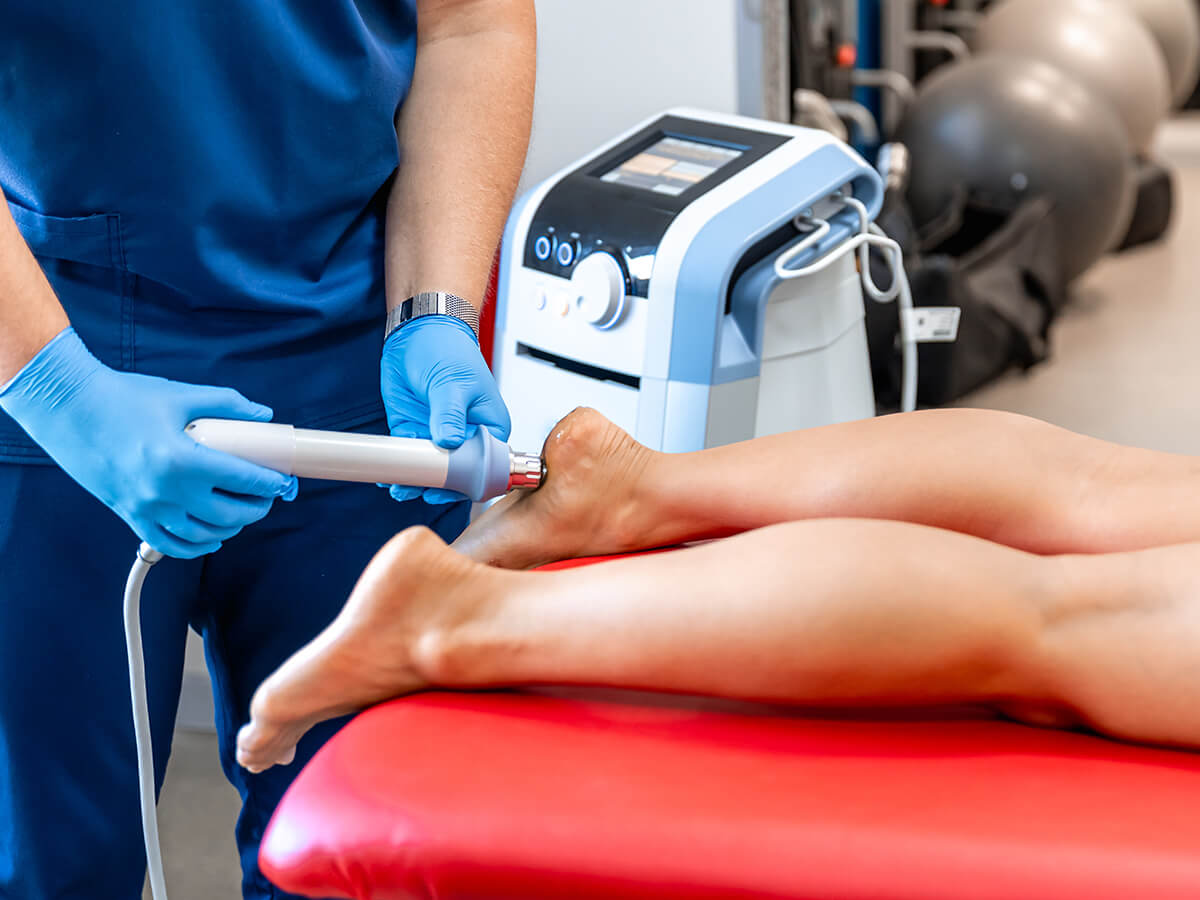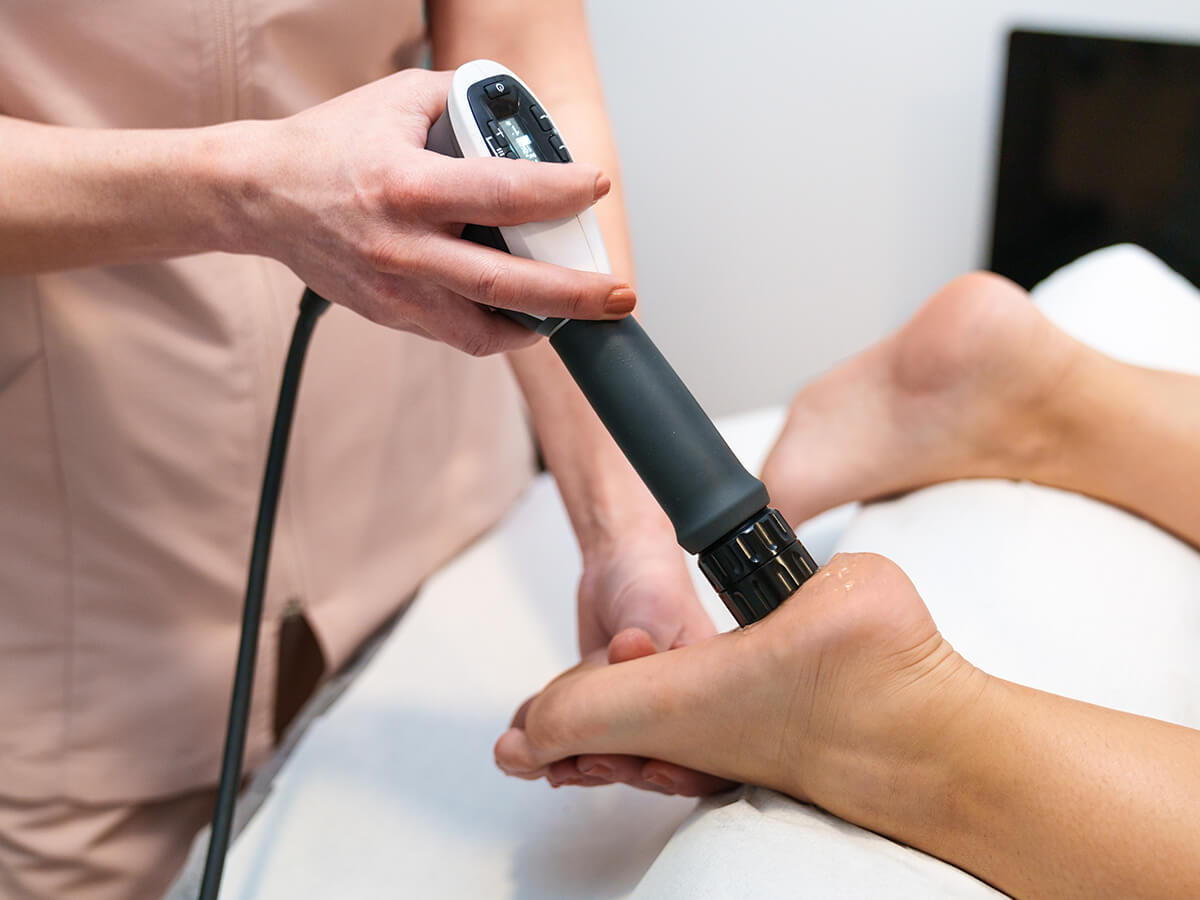Plantar Fasciitis Pain Relief: How Shockwave Therapy Can Help
Plantar fasciitis is one of the most common causes of heel pain. Many people experience sharp discomfort in the bottom of their feet, especially in the morning or after long periods of standing. The condition can make walking, exercising, and daily activities challenging, affecting overall quality of life. For those seeking lasting relief, shockwave therapy has emerged as an effective and non-invasive option that targets the root cause of the pain.
Plantar Fasciitis: What You Need to Know
Plantar fasciitis occurs when the plantar fascia, the thick band of tissue along the bottom of the foot, becomes irritated and inflamed. This condition often leads to sharp or aching pain around the heel. Recognizing the symptoms and underlying causes helps determine the most effective treatment.
What is Plantar Fasciitis?
Plantar fasciitis is an inflammation of the plantar fascia, the thick band of tissue that supports the arch of the foot. Pain often worsens with the first steps in the morning or after long periods of sitting, making simple movements uncomfortable.
If left untreated, the condition can develop into chronic discomfort that affects walking, standing, and overall mobility. Early intervention is important to prevent long-term complications and help patients return to normal daily activities.
Causes and Risk Factors
Causes
- Overuse
Repetitive activities like running, walking, or standing for long periods can strain the plantar fascia. Constant stress leads to small tears and inflammation in the tissue.
- Improper Footwear
Shoes lacking proper arch support or cushioning increase pressure on the plantar fascia. Wearing them regularly can trigger or worsen heel pain.
- Foot Structure
Flat feet or very high arches change how weight is distributed across the foot. These structural differences place extra tension on the plantar fascia, causing irritation.
Risk Factors
- Long Hours on Feet
Jobs requiring prolonged standing or walking, such as teaching or retail work, put repeated stress on the plantar fascia. This can increase the likelihood of developing plantar fasciitis over time.
- Obesity
Carrying excess weight adds pressure to the heel and arch of the foot. This added load makes the plantar fascia more prone to inflammation and pain.
- Age
Plantar fasciitis is more common in people aged 40–60. With age, the plantar fascia becomes less flexible and more susceptible to injury.
Conventional Treatments
- Rest
Reducing activity allows the plantar fascia to heal and limits further strain. Taking breaks from high-impact exercises can decrease pain and inflammation over time.
- Stretching Exercises
Stretching the calf and plantar fascia helps ease tension and increases flexibility. Doing these stretches consistently can lessen morning stiffness and lower the risk of pain returning.
- Orthotics
Custom or over-the-counter shoe inserts provide support to the arch and distribute pressure more evenly. Using orthotics can reduce stress on the plantar fascia and improve walking comfort.
- Ice Therapy
Applying ice to the heel helps reduce inflammation and numb pain. Ice therapy is especially effective after activity or during flare-ups.
- Pain Medications
Over-the-counter anti-inflammatory drugs can temporarily relieve pain and swelling. These medications manage symptoms but do not address the underlying cause of plantar fasciitis.
What is Shockwave Therapy?
Shockwave therapy uses acoustic waves to promote healing in injured tissues without surgery. By focusing on the plantar fascia, it helps reduce inflammation and supports tissue regeneration. Its effectiveness and quick recovery time have made this treatment increasingly popular.
Shockwave therapy delivers high-energy waves to injured tissues, triggering the body’s natural repair mechanisms. These waves stimulate blood flow and encourage collagen production in the affected area. The result is reduced pain and faster tissue recovery.
Types of Shockwave Therapy
- Radial Shockwave Therapy
Radial shockwave therapy in Ontario spreads energy over a broader area, targeting surface tissues. It is ideal for treating general plantar fascia inflammation and milder cases of plantar fasciitis.
- Focused Shockwave Therapy
Focused shockwave therapy in Ontario concentrates energy on a specific, deeper area of tissue. This type is often used for chronic or persistent plantar fascia injuries that require precise treatment.

How Shockwave Therapy Helps with Plantar Fasciitis
Shockwave therapy provides multiple benefits for plantar fasciitis patients. It reduces pain, promotes healing, and offers a non-surgical solution for chronic cases. Many patients notice improvement within a few weeks of treatment.
- Pain Relief Mechanism
The therapy works by stimulating nerve endings, which decreases pain signals sent to the brain. Increased blood flow helps the tissue repair process. Patients often experience significant relief from heel pain, enabling better mobility and comfort.
- Accelerates Healing
Shockwave treatment promotes collagen production, which strengthens the plantar fascia. It also reduces inflammation and breaks down scar tissue that may contribute to chronic pain. Healing is often faster than with conventional methods alone.
- Non-Invasive Alternative
Unlike surgery or injections, shockwave therapy avoids cutting or penetrating the skin. Patients can return to daily activities quickly with minimal downtime. This makes it a preferred option for those seeking effective shockwave therapy services without invasive procedures.
Research and Evidence Supporting Shockwave Therapy
Multiple studies confirm the effectiveness of shockwave therapy for plantar fasciitis. Clinical research shows improvements in pain, function, and long-term recovery compared to traditional treatments.
Clinical Studies
A 2022 study published in the Clinical Journal of Sport Medicine compared radial extracorporeal shockwave therapy (rESWT) with autologous blood injection (ABI) in patients with chronic plantar fasciitis. The study found significant improvements in pain and function for both treatments over a six-month period, with no significant differences between the two groups.
Additionally, a 2023 systematic review and meta-analysis published in Frontiers in Immunology concluded that extracorporeal shockwave therapy (ESWT) has a large effect on pain and function in patients with plantar fasciitis, with moderate to high-quality evidence supporting its efficacy in the short, mid, and long term.
Professional Opinions
Podiatrists and physiotherapists recommend shockwave therapy for patients who do not respond to conventional methods. Healthcare professionals note that both shockwave and physiotherapy offer targeted solutions that improve patient satisfaction.
Who Can Benefit from Shockwave Therapy?
Shockwave therapy is suitable for a wide range of patients with plantar fasciitis. However, it is not recommended for everyone, and a proper assessment is important before starting treatment.
Ideal Candidates
Patients with chronic plantar fasciitis lasting more than six months often benefit the most. Those seeking a non-surgical solution with minimal downtime can see significant improvement. People who have tried other treatments without lasting results may find Shockwave therapy near me a reliable option.
Precautions and Contraindications
- Pregnancy
Pregnant patients should avoid shockwave therapy as its safety has not been established for developing babies. Alternative treatments should be considered during pregnancy to protect both mother and child.
- Blood Clotting Disorders
Patients with clotting disorders or those taking blood-thinning medications may face increased risk of bleeding or bruising. Shockwave therapy could worsen these conditions, so careful evaluation is necessary.
- Severe Infections or Open Wounds
Shockwave therapy should not be applied over areas with active infections or open sores. Treating infected tissue can aggravate the condition and slow down healing.
- Cancer or Tumours at Treatment Site
Patients with malignant growths near the treatment area should avoid shockwave therapy. Applying energy to cancerous tissue could interfere with treatment and pose health risks.
- Recent Corticosteroid Injections
Receiving corticosteroid injections in the same area within the last 6–8 weeks may reduce the effectiveness of shockwave therapy. Waiting for the appropriate time ensures optimal results and prevents tissue damage.
Comparing Shockwave Therapy to Other Treatments
Shockwave therapy offers advantages compared to other common plantar fasciitis treatments. It is non-invasive, efficient, and promotes long-term healing.
- Shockwave vs. Cortisone Injections
Cortisone injections provide quick pain relief but may weaken tissue over time. Shockwave therapy offers gradual improvement while strengthening the plantar fascia. Patients often prefer this safer, longer-lasting alternative.
- Shockwave vs. Surgery
Surgery involves higher risks, longer recovery, and potential complications. Shockwave therapy avoids these issues while still improving mobility and reducing pain. Non-invasive treatment makes it a viable first-line option before considering surgery.
- Shockwave vs. Physical Therapy
Physical therapy improves flexibility and reduces stress on the fascia. Combining it with shockwave therapy enhances results. Shockwave pain relief in Ontario often works alongside physiotherapy to maximize recovery.
Frequently Asked Questions
- Can I walk immediately after treatment?
Most patients can walk normally after a session. Light activity is encouraged, but high-impact exercise should be avoided initially.
- How do I know if shockwave therapy is right for me?
A consultation with a physiotherapist or podiatrist can determine suitability. They assess your pain, severity, and medical history before recommending treatment.
- Do I need special preparation before therapy?
No special preparation is usually required. Patients should wear comfortable shoes and avoid applying heavy creams or lotions to the foot.

Get Pain-Free Feet Today at Oriole Physiotherapy & Rehabilitation Centre
If you are looking for a reliable North York physiotherapy clinic, Oriole Physiotherapy & Rehabilitation Centre offers shockwave therapy in Ontario to relieve plantar fasciitis pain. Our team provides tailored treatment plans, combining shockwave treatment with physiotherapy sessions for fast and lasting results.
Call us at (416) 221-0772 to schedule your consultation today and step into comfort with proper care.

